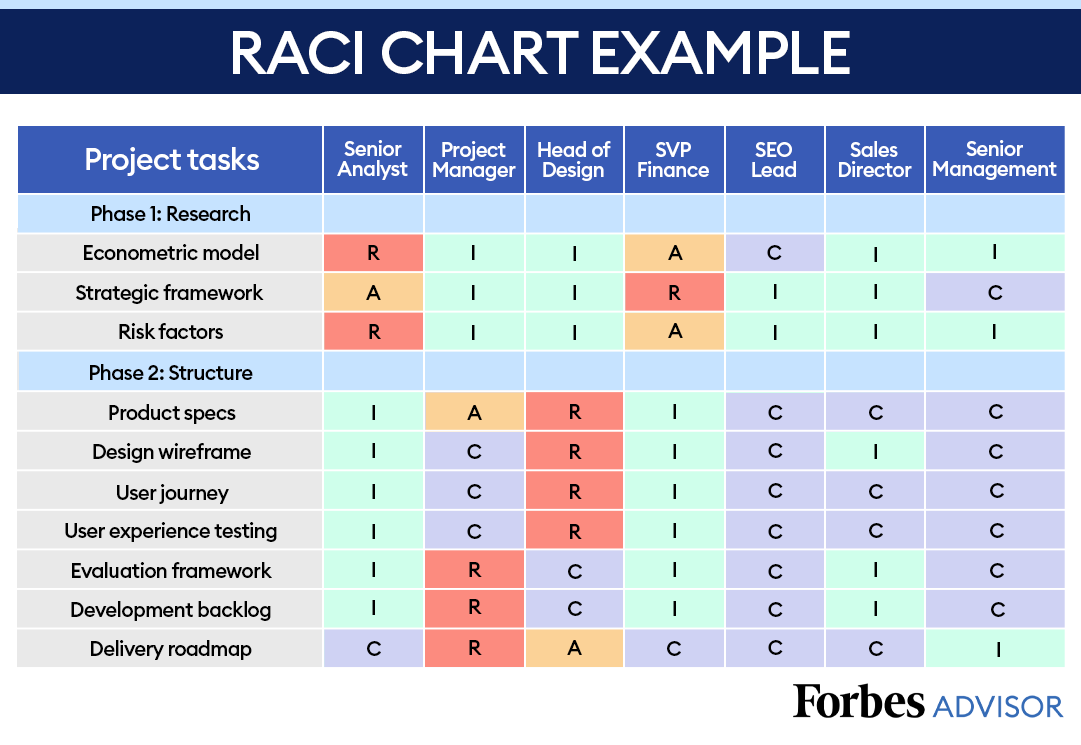Stakeholder frameworks Part 1
Stakeholders are humans after all and boy are they a challenge.
By Hamzah Javaid
November 11, 2020

Complex projects require clear communication of roles and responsibilities
In the world of project management, clarity and accountability are key. That’s where the RACI model and stakeholder mapping come into play. The RACI model—short for Responsible, Accountable, Consulted, and Informed—serves as a straightforward framework for defining roles and responsibilities within a project team. On the other hand, stakeholder mapping helps you identify and prioritize the individuals or groups who will be affected by the project.
When applied to a business case project, these tools are not just beneficial; they’re essential. They ensure that communication flows smoothly, roles are clearly defined, and decision-making is streamlined. In doing so, they align the team’s efforts with the business objectives, significantly increasing the odds of project success.
RACI model
Demonstration - RACI Model
Responsible
-
Identification & Designation: The first step is to identify the skill sets required for each task and match them with individuals who possess those skills. This is often done through a skills matrix or competency framework.
-
Streamlining Workflows: By clearly defining who is responsible for what, there is no overlap or duplication of efforts. This clarity helps in streamlining workflows and ensures that tasks are completed efficiently.
Accountable
-
Defining Roles: For every project or initiative, one individual is designated as ultimately accountable. This person is often a project manager or a senior executive.
-
Fostering Ownership: Knowing that they are the single point of accountability, the individual is more likely to take ownership, make decisive choices, and ensure the project’s success.
Consulted
-
Stakeholder Involvement: Key stakeholders are identified early in the project and are consulted at various stages. Their input is actively sought through meetings, surveys, or focus groups.
-
Integrating Feedback: The feedback gathered is then integrated into the project plans, ensuring that the project is aligned with stakeholder expectations and requirements.
Informed
-
Strategies: Regular updates are sent out to all stakeholders to keep them informed. This could be through newsletters, emails, or dashboard updates.
-
Tools and Channels: Tools like project management software, intranet portals, and communication platforms are used to ensure transparency and open lines of communication.

Complex projects require clear communication of roles and responsibilities
At the end of the day, it’s crucial to remain flexible and adapt the model as needed to fit the unique needs and challenges of each project or initiative.
RACI model - pros and cons
Pros
- Enhances clarity and communication among stakeholders.
- Prevents task overload and information clutter for team members.
- Eliminates the issue of “too many cooks” in decision-making.
- Helps stakeholders anticipate the project’s impact on their roles.
Cons
- Time-consuming to create for simple projects.
- Roles are inflexible and may not capture the nuances of team involvement.
- Risk of confusion over terms like “Responsible” vs “Accountable” and “Consulted” vs “Informed.”
- Becomes a mere formality if not actively referenced post-approval.
Noteable mentions
- RASCI: Adds ‘Supportive’ to RACI, for those aiding the responsible parties in tasks.
- CARS: Redefines roles as Communicate, Approve, Responsible, and Support.
- RAS: Simplifies CARS to just Responsible, Approve, and Support, omitting external communication.
- DACI: Includes Drivers, Approvers, Contributors, and Informed roles, similar to RACI.
- CLAM: Assigns roles as Contribute, Lead, Approve, and Monitor.